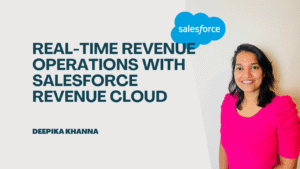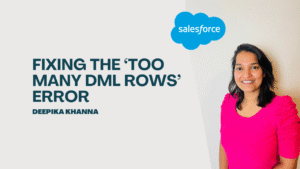If you’re preparing for a career as a Salesforce Business Analyst (BA), you’ve chosen one of the most impactful roles in the Salesforce ecosystem. Business Analysts act as translators between the business and technical worlds, ensuring Salesforce implementations actually solve problems and add measurable value.
This blog post is your one-stop guide to:
- Frequently asked Salesforce BA interview questions with sample answers
- A step-by-step Salesforce certification roadmap tailored for Business Analysts
- Skills and tips you need to land your next Salesforce BA role
Table of Contents
ToggleWhy Salesforce Business Analyst Role in High Demand?
The supply of Salesforce professionals grew by 19% in 2024, while employer demand declined by 37%, illustrating the shifting landscape of Salesforce hiring.
Every organization today wants to be customer-centric. Salesforce, being the world’s #1 CRM, helps companies streamline sales, service, marketing, and data. But here’s the challenge: business leaders know what they want, and developers know how to build, but the gap between these two is often wide.
Business requirements are clearly captured and validated
Often, projects fail because what the business wants and what the technical team builds are not the same. A BA bridges this gap by conducting workshops, documenting user stories, mapping current (As-Is) and future (To-Be) processes, and getting stakeholder approval before development begins. Many Salesforce BA interview questions focus on how you gather and validate requirements, so being able to explain these steps with examples is critical.
The right Salesforce features are used instead of unnecessary customization
Salesforce is a powerful platform with countless out-of-the-box features. Reports, Dashboards, Flows, Validation Rules, Approval Processes, and more. Many times, organizations jump straight into custom coding when a simpler, faster, and cheaper configuration would do the job. A skilled BA prevents this mistake by knowing when to use standard Salesforce functionality and when customization is truly required. This saves time, reduces technical debt, and makes future upgrades smoother.
ROI on Salesforce investments is measurable and visible to leadership
Businesses don’t just want technology—they want results. A Salesforce BA helps define KPIs (Key Performance Indicators) tied to Salesforce solutions. For example, automating lead assignment should reduce response times, or implementing dashboards should improve sales forecasting accuracy. By tracking these metrics post-implementation, the BA shows leadership exactly how Salesforce is driving growth, efficiency, and profitability. Since many Salesforce BA interview questions are designed to test whether you can connect Salesforce features to business value, being able to explain ROI-focused examples will set you apart from other candidates.
Top Salesforce BA Interview Questions and Answers
If you’re going into an interview, you need to be ready not just with theory, but with practical examples. Employers often focus on Salesforce BA interview questions that test both your business understanding and your ability to apply Salesforce features effectively. Here are some common Salesforce BA interview questions and answers:
1. What is the role of a Salesforce Business Analyst?
Answer:
A Salesforce BA serves as a liaison between stakeholders and the technical team. The role includes requirement gathering, documenting user stories, creating process maps, analyzing business pain points, recommending Salesforce features, and ensuring the final solution matches business expectations. Unlike a developer, a BA doesn’t code but designs solutions and validates outcomes.
2. How do you gather business requirements for a Salesforce project?
Answer:
I use a combination of workshops, stakeholder interviews, surveys, shadowing business processes, and reviewing existing documentation. Once requirements are identified, I convert them into user stories with acceptance criteria and get sign-off from business teams. This ensures clarity and reduces misunderstandings later in the project lifecycle.
3. Can you explain the difference between “As-Is” and “To-Be” process flows?
Answer:
- As-Is: A snapshot of the current process. It captures inefficiencies, bottlenecks, and manual workarounds.
- To-Be: A redesigned process map that leverages Salesforce automation, flows, and best practices.
For example, in lead management, the As-Is process might involve manual lead assignments, while the To-Be process includes automated lead routing using Salesforce Flows.
4. How do you prioritize requirements when stakeholders disagree?
Answer:
I apply prioritization frameworks like MoSCoW (Must-have, Should-have, Could-have, Won’t-have) or value vs. effort matrices. I facilitate discussions with stakeholders and align priorities with business KPIs and ROI. For instance, if Sales wants advanced reporting and Service wants automation, I’ll map both to business impact and decide which one drives immediate value.
5. What Salesforce features do BAs commonly work with?
Answer:
A Salesforce BA doesn’t build with code, but they frequently work with Sales Cloud, Service Cloud, Experience Cloud, Reports & Dashboards, Security settings, and automation tools like Flows and Approval Processes. They also need to understand integrations with external systems, as data often comes from multiple sources.
6. How do you handle change management in Salesforce projects?
Answer:
Change management is about preparing users for new processes. I usually start by involving stakeholders early, creating training documentation, running sandbox demos, and setting up pilot groups. Regular communication and phased rollouts reduce resistance. For example, instead of introducing 10 new features at once, I prefer smaller, digestible releases.
7. Give an example of how you improved a process using Salesforce.
Answer:
In my last role, the sales team spent hours manually updating opportunities. I proposed automation using Opportunity Stages and Path. After implementation, opportunity updates became standardized, reporting accuracy improved, and time spent per opportunity decreased by 40%. This increased adoption and sales leadership visibility.
Salesforce BA Certification Roadmap
Step 1: Foundation – Salesforce Administrator Certification
The Salesforce Administrator Certification is the entry point. It teaches you Salesforce basics:
- User management
- Security and permissions
- Reports and dashboards
- Workflow automation
- Lightning App Builder
Why it matters: Most BA interviews expect you to know what an Admin can do versus what needs a Developer.
Step 2: Specialization – Salesforce Business Analyst Certification
This is the newest and most relevant certification for BAs. It covers:
- Requirement elicitation techniques
- Business process mapping
- Stakeholder engagement
- Translating requirements into Salesforce solutions
- Agile practices
Why it matters: Employers now look for this certification as proof of BA-specific skills.
Step 3: Expansion – Consultant and App Builder Certifications
To strengthen your knowledge:
- Sales Cloud Consultant → Learn advanced sales processes.
- Service Cloud Consultant → Specialize in customer service workflows.
- Platform App Builder → Understand low-code customization with Lightning Apps.
Why it matters: These certifications prepare you for end-to-end project discussions with clients.
Step 4: Advanced Expertise – Salesforce Data Cloud Consultant
One of the most in-demand advanced skills is data integration and management. That’s why pursuing the
Salesforce Data Cloud Consultant Certification Course is highly recommended.
This certification teaches you how to work with large datasets, unify data from multiple systems, and design 360-degree customer views. BAs with Data Cloud knowledge are particularly valuable to enterprise clients.
Salesforce Admin & Developer Training for BAs
Even though Business Analysts don’t usually build solutions, having a basic understanding of Salesforce configuration and development is a big advantage. That’s why many professionals complement their BA skills with Salesforce admin & developer training.
It helps you:
- Understand what can be done with configuration vs. custom code
- Communicate better with Admins and Developers
- Strengthen your Salesforce career path
A BA with admin and developer knowledge stands out as someone who not only gathers requirements but also understands how they’ll be delivered in Salesforce.
Bottom Line
Becoming a Salesforce Business Analyst is about understanding business problems and solving them using Salesforce’s powerful features.
If you prepare with real-world Salesforce BA interview questions and answers, follow the certification roadmap, and invest in advanced learning like the Salesforce Data Cloud Consultant Certification Course, you’ll stand out in the job market.
Salesforce is constantly evolving, and so is the BA role. Those who keep learning and adapting will continue to thrive and shape how organizations use CRM to succeed. Platforms like Mytutorialrack, led by Salesforce trainer Deepika Khanna, provide structured courses, hands-on projects, and mentorship to help professionals grow from beginners to experts in the Salesforce ecosystem.






